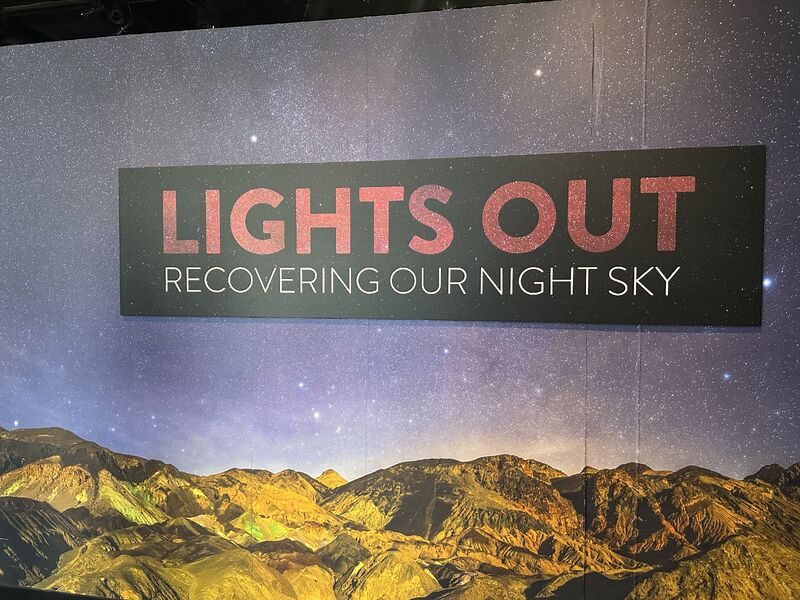By Professor Tiffany Banks On Tuesday, September 30th , students from my COMM 108: Foundations…
By Bill Krayer, Adjunct Professor of Meteorology
Wednesday, November 11, 2020
Today was the first day of the two-week climate-change unit in both AOSC105 Intro to Meteorology and AOSC100 Weather and Climate. I introduced the Learning Lab website, and much to my delight I found that many of my students had already created their accounts. They seemed interested in how to do searches and create collections. I also introduced the details of the Smithsonian Experience assignment. I’m asking them to produce a short PowerPoint presentation with audio narration, something that I have yet to do. It seems that a number of my students have already produced narrated presentations in other classes, so I am relieved to know that the technology won’t be an issue.
At the suggestion of several other Smithsonian fellows, I showed the “Chaos Motor” video (https://www.youtube.com/watch?v=Hw7hajAjv5k) to my morning AOSC105 class and asked for feedback on Zoom chat. It was fascinating to watch the posts become more in-depth as the students thought through what they were observing. I will show it again near the end of the unit to see if they make any additional connections with global climate change.
Monday, November 16, 2020
The second session of the climate-change unit focused on past climate changes and the use of proxy data sources, the subject of the Smithsonian Experience assignment. The morning class did not get off to a promising start. One student literally had rolled out of bed and onto Zoom, while another said repeatedly, “I’m really tired.” And these were two of my more motivated students! After a short discussion of the previous night’s weather (and a wild night of wind gusts and heavy rain it was), the class got back on the rails. Everyone has created an account on the Learning Lab. I reminded them of the task, and off they went in search of resources they want to use for their project.
The afternoon students were, thankfully, more alert and eager to get started on their Smithsonian Experience project. It was apparent in class discussion that they were still unclear about the nature of proxy data; several commented that it was the same to them as radiometric dating. I think I need to do more direct instruction on what makes a good proxy. I will fit that in during the next session.
Wednesday, November 18, 2020
As I prepared this session, I knew that any conversation about the use of proxy data to do quantitative analysis of climate change would require a fair amount of scaffolding. Some of my students, especially in the lab class, have sketchy backgrounds in introductory chemistry and physics. It is nearly impossible to understand Milankovitch cycles and stable isotope analysis without some experience with physical science. And to add to the challenge, many of the proxy data resources in my Learning Lab collections require the reader to be conversant in stable isotope analysis. Despite these potential obstacles, I decided to wade in.
I spent most of my time in direct instruction, stopping frequently to ask for feedback. From what I could tell, most of my students understand at least at a basic level. I found an excellent video on stable isotope analysis that was by and large understandable for everyone. I polled my afternoon class to check for comprehension, and the results were somewhat more encouraging than I had expected.
It is gratifying to see that many of the students are quite motivated to work on their Smithsonian Experience project. I am looking forward to reviewing the narrated PowerPoint presentations that come out of their research in the Learning Lab.
Monday, November 23, 2020
Today was the last of four sessions on climate change. I took my classes into concepts that are on the very edge of an introductory course. Complex systems are non-linear and follow the principles of chaos theory. It’s really impossible to understand the issues surrounding the future of Earth’s climate system without at least a surface understanding of non-linear dynamics, tipping points, and regime change (in the physical sense).
I checked at the beginning of each class to determine if everyone had created an account on the Learning Lab, and to my knowledge they had. There seems to be some mixture of emotions over the project: enthusiasm, yes, but mixed with a little fear (as in diving into the deep end of the pool). I think I can say that the students are a little awestruck with the sheer volume of resource material and objects in the Learning Lab. As a result, they are taking it quite seriously.
During the morning class I asked the students to help create the rubric for the Smithsonian Experience. That was very helpful to me because it gave me some clarity on where they were in processing the assignment. I like the idea. It gives them ownership in evaluating the product.
Finally, I showed the 10-minute YouTube video presentation by Dr. Stefan Rehmstorf, paleoclimatologist, at the Arctic Circle Climate Change Conference in Reykjavik, Iceland, in December 2019. His topic was the melting of the Greenland Ice Sheet, the consequent dilution of North Atlantic seawater by freshwater runoff, and the resulting slowing down of the Gulf Stream current. Dr. Rehmstorf’s message was clear and frightening. The melting of the Greenland glaciers is a positive feedback loop that may be leading to several meters of sea level rise in a relatively short time. Additionally, a slowing of the circulation pattern in the North Atlantic seems to be leading global climate to a tipping point when the entire Global Ocean Conveyor Belt may spasm into a new regime. It’s not a matter of “The Day After Tomorrow,” but it is serious. After the video I asked the students to write their reactions in the chat. They all are legitimately worried about the results of climate change in their lifetimes. No, there were no climate-change deniers in either group.
Wednesday, December 2, 2020
Now that I have completed the review of all the Smithsonian Experience presentations I have received, it’s time to make some overall conclusions. I was impressed with the quality of most of the projects. Most of my students commented in their reflections that they really liked working with the Learning Lab. I was surprised with how easy it was for them. As a result, they were able to access the information they needed to complete the assignment.
There was a general fascination with rapid climate changes that happened in deep time. Maybe it’s a leftover love affair many of my students have had with dinosaurs. The Paleocene/Eocene Thermal Maximum (PETM) attracted the attention of several. With one exception, students steered clear of resources that involved the application of stable isotope analysis as the primary proxy. I shouldn’t be surprised. Stable isotope analysis is conceptually at the high end of climate change topics for a 100-level survey course. I’m not discouraged because they will remember our discussion when they read articles in the future that involve the use of stable isotopes.
I was surprised with the high percentage of my students who have been to one or more of the Smithsonian museums. And for those who have never been to the National Museum of Natural History, the virtual tour was rated very high as an appetizer. I even found out that one student’s father worked his whole career at NMNH. Who knew? There is an eagerness to get this pandemic over with so the museums can reopen without restrictions.
Finally, I know that many of my students told me that the project was challenging but FUN. They loved directing their energy into their own learning and orchestrating their own presentations. I will definitely use this inquiry-based project again in the spring of 2021 and beyond. Many thanks go to Philippa and the curators and education specialists who organized our fellowship presentations. This has been a wonderful experience for me. And deepest appreciation to Denise, Mimi, and Sara for their coordination of the program under much less than ideal circumstances.





This Post Has 0 Comments